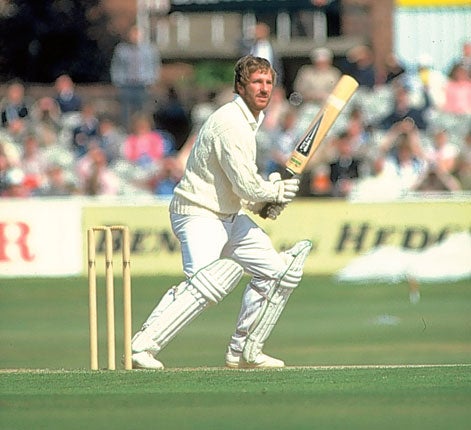Test of time: two thousand up – but is the end near for five-day game?
England and India start a landmark Test at Lord's on Thursday with the classic format under threat, writes Stephen Brenkley

An important issue during the celebrations for the 2,000th Test match this week is whether there will be a 3,000th. It may be the only issue that counts and it bears the hallmarks of the concern expressed at a centenarian's 100th birthday party wondering if he will make 150.
In both cases it is a matter of extreme doubt. The longest, purest and best form of big cricket is in crisis, fighting for a future and an audience that may not exist.
To anybody watching England and India play at Lord's in the first Test match of the series that begins on Thursday, this will seem a crazy prognosis. The ground, in all its considerable glory, will be full, the carnival atmosphere, assuming the weather is remotely kind, will be palpable, the match may well contain many of the qualities that make Test cricket so alluring.
Far from indicating there is anything wrong, it will seem perfect. Yet it will be a false reflection of reality and one that Haroon Lorgat, chief executive of the International Cricket Council, addressed yesterday.
"We have got to promote this game," he said. "We have said over and over that we will protect the Test format. It's incumbent on us. We have enjoyed it for generations and it's our responsibility to make sure it's there for the future."
Test cricket has become the poor relation in a sport trying to balance different formats of the game: three spinning plates and one in grave danger of smashing to the floor. In most parts of the world but England the evidence is grim.
Audiences were pitiful for the recent Test series between West Indies and India, which ended last week. If the Caribbean is a case made special by the combination of tiny population and a poor team, it is not wonderful in many other places.
In India itself, Tests have become notoriously ill-attended in all but the major centres. When South Africa played there last year – this, do not forget, was a contest between the Nos 1 and 2 nations in the world – it was possible to count the number of people in the ground at Nagpur for the first Test using your fingers. With Australia later in the year, a large abacus would have done the trick in Chandigarh.
Crowds are still healthy in England, especially at the London venues, Lord's and The Oval, but they are also gradually falling.
The price of Test cricket – if not its value – is demonstrated by the cash paid by TV companies to screen it. When broadcasting rights for sporting events first started getting serious 30 or so years ago the cost of a day's Test cricket was on a par with a single one-day international, perhaps a little more.
That was gradually eroded as the decades went by, so that what is now paid for a whole five days of Test cricket is roughly equal to a single ODI, perhaps a little less – and there is no reason to suppose the gap will narrow. In turn, television audiences have dwindled.
The ICC is aware that something must be done quickly. It would be entitled to wonder why Test cricket, whose entertainment value has multiplied in the past 20 years, is struggling. The teams have a great responsibility. Profound words of faith are all well and good but only the players can remind us all what it is that makes Test cricket worth watching more than any other sport.
Subscribe to Independent Premium to bookmark this article
Want to bookmark your favourite articles and stories to read or reference later? Start your Independent Premium subscription today.

Join our commenting forum
Join thought-provoking conversations, follow other Independent readers and see their replies
Comments